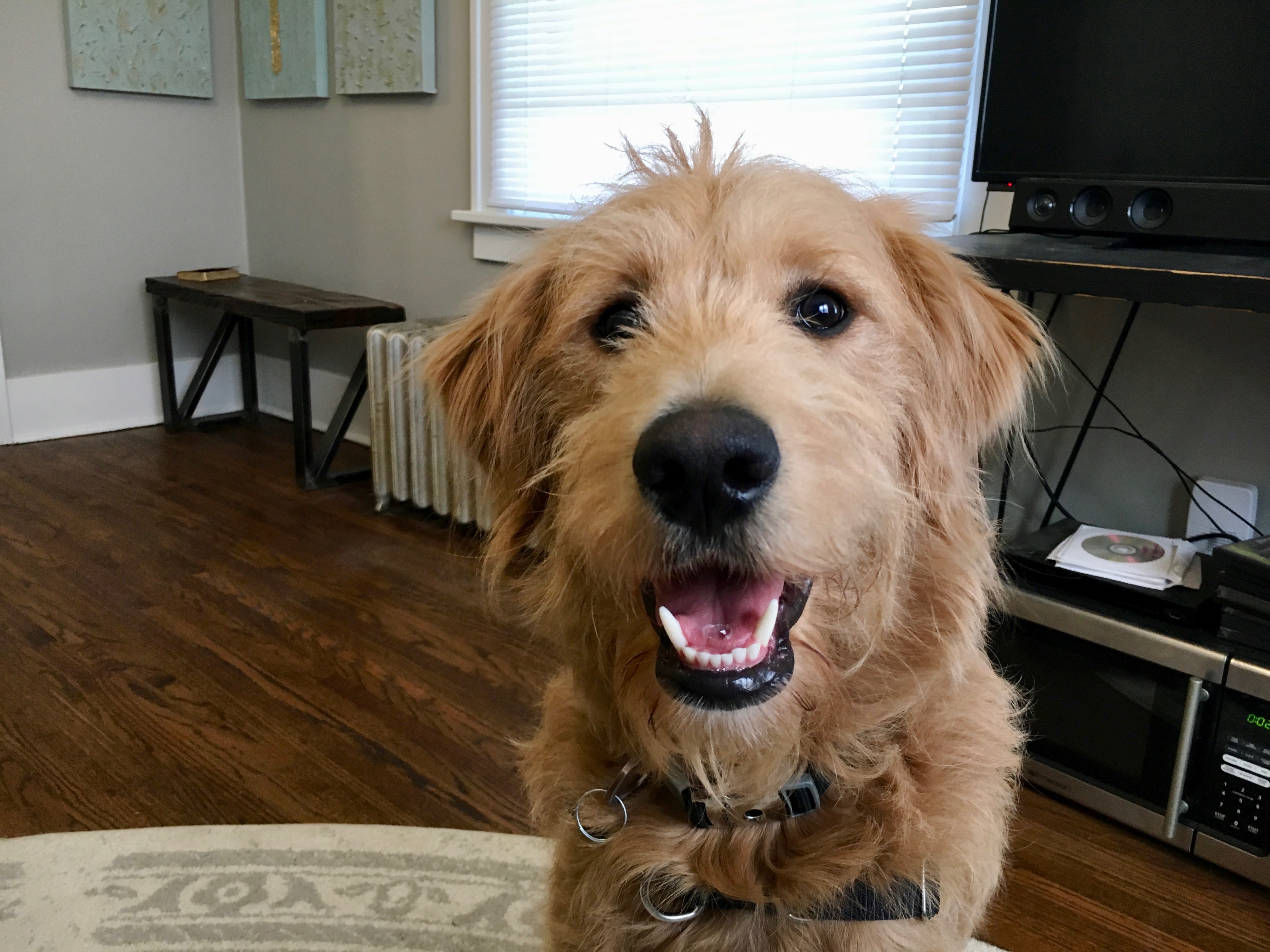Helping a Dog Get Over a Fear of His Collar Using a CER
By: David Codr
Published Date: March 27, 2018
For this Omaha dog training session we worked with Sampson, a 1-year-old Goldendoodle who is reactive to other dogs on walks and hates having his collar put on.
His guardians moved from a house in Tennessee into an apartment in Omaha which made things more challenging. Although he is not what I would call a super high energy dog, I found he was under exercised. This reduction of exercise was due to no longer having a back yard combined with his reactivity to other dogs.
After suggesting a few new forms of exercise and that his family start keeping an exercise journal to note his exercise details, the times he misbehaved or stole things for attention and grade for the day, I was ready to address Sampson’s fear of having the collar put on.
Dogs learn through association and often when they move away from a collar or other objects its because it has become associated as a negative. Its possible that since he encountered dogs shortly after having the collar put on that Sampson now runs from the collar to avoid being around these other dogs.
I decided to create a Conditioned Emotional Response or CER to help Sampson get over his fear of his dog collar. You can learn how to use this positive dog training method by watching the video below.
As you saw at the start of the above video, just having the collar present made Sampson fearful, anxious and nervous. But by using patience and the power of positive dog training, I was able to easily slip the collar over his head AND have him feel good about it.
The great thing about using a CER to help a dog get over a fear of something is it becomes a permanent fix. It is easy to do, just requiring practice a few times a day for a week or so. Stopping a dog from being afraid of something is very rewarding for me as a dog behaviorist as you know you are improving the dog’s quality of life.
If his guardians practice this CER exercise a few times a day for a week, Sampson will learn to actually like having his collar put on.
Now because of how reactive Sampson is on walks, I passed along a number of dog walking tips and showed them how to use the special twist of the Martingale collar to give them more control. But it will be equally important they learn how to read his body language and respect him when he communicates he is uncomfortable with his proximity to another dog.
Many people miss the dog’s warning signs and keep plodding ahead. While we see it as simply walking past another dog, Sampson sees it as his guardians leading him into danger. Since they had not listened to him, he had learned to act aggressively towards other dogs to keep them away from him.
Im hoping that the dog behavior tips I shared with his guardians will help Sampson learn to relax and rebuild his trust in his humans to take the lead and keep him safe. But if he continues to be reactive around other dogs a month or so after the session, they may want to enroll him in our Reactive Dog training classes to address any lingering fears or anxieties.
To help the guardians remember the dog behavior secrets I shared with them in this in home dog training session, we shot a roadmap to success video that you can check out below.
Categorized in: Dog Psychology


